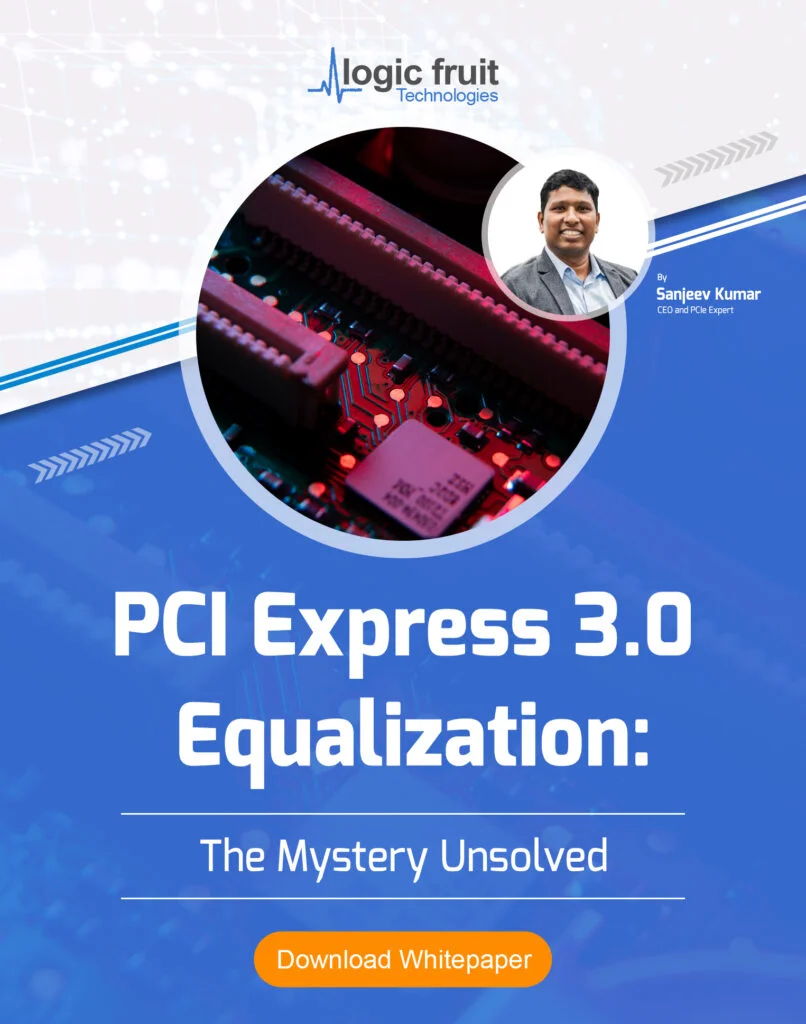FPGA Insights has engaged in an exclusive interview with Talha Farooq Hashmi, FPGA Design Engineer at National Aerospace, Science & Technology Park (NASTP)
Q1) Can you provide an overview of experience with FPGA design projects mentioning a few that you’ve worked on, starting with a brief introduction?
I am Talha Farooq currently working as an FPGA Design Engineer. I have worked with different FPGAs like SOC, SOM and MPSoC board. I have also worked with NI equipment which includes SDR, R-Series DAQ cards and FlexRIO FPGAs.
Some of my major projects are synchronized acquisition of RF data using multiple FPGAs which includes digital signal processing of RF data on FPGA, High speed streaming of data from FGPA using SFP28, QSFP interface. Deployment of DSP models on Data Acceleration cards and implementation of High speed serial link using PCIe interface.
Q2) Can you explain the benefits of using FPGAs over other types of processors?
One of the major advantage is adaptability which is allowing you to adapt to changing requirements or fix issues without requiring hardware changes. This flexibility is valuable in industries with evolving standards or rapidly changing application needs. Secondly, Real Time Processing where they are often used in real-time systems where predictable and deterministic performance is crucial. They can guarantee a response within a specific timeframe, which is essential in applications like aerospace, medical, and industrial automation.
Q3) What are the most significant trends observed in the FPGA industry over the past year? How will these trends shape the industry’s future?
The FPGA industry has witnessed several significant trends over the past year that are expected to shape its future.
FPGAs were increasingly being used in data centers for tasks like acceleration of AI workloads, cryptography, and networking.
The trend toward data center acceleration was expected to continue as companies sought to improve the performance and energy efficiency of their servers. They are deployed to accelerate artificial intelligence and machine learning applications. The ability to reconfigure FPGA hardware for specific AI tasks made them attractive for accelerating deep learning inference and training workloads.
Using MPSoC architecture it provides leverage for greater customization and co-design of hardware and software, enabling companies to tailor their solutions for specific applications. This trend was expected to continue as industries sought specialized solutions for their unique needs. They are now being used for edge computing where real time data is processed in low latency and definite time and this will grow in future as IOT is continually improving.
Q4) How do you see FPGA development evolving to meet the demands of modern applications and complex workloads?
FPGA development is a dynamic and evolving field that is constantly adapting to the challenges and opportunities of modern applications and complex workloads.
Some of the major trends are:
Integration with Heterogeneous Architectures which will be more tightly integrated with other processing units like CPUs and GPUs. This integration will enable developers to create heterogeneous computing platforms that can efficiently handle a wide range of workloads, from general-purpose processing to specialized acceleration.
FPGA development will increasingly focus on accelerating AI and machine learning workloads.
As energy consumption becomes a critical concern in modern computing, FPGA designs will aim to maximize performance per watt, making them attractive for edge and data center applications.
As FPGAs are being used in defense and industries where data security is important. Enhancing security features to protect against hardware vulnerabilities and ensure the reliability of FPGA-based systems.
Cloud providers will continue to offer FPGA instances and services, making FPGA resources more accessible to a wide range of users. This will enable companies to leverage FPGA acceleration without the need for significant upfront hardware investments.
FPGA development will play a crucial role in edge computing by providing real-time processing capabilities at the edge of networks. This is essential for applications like autonomous vehicles, industrial automation, and IoT devices.
Q5) Key drivers behind the increasing adoption of FPGAs in various applications and industries?
FPGAs offer a high degree of customization and flexibility. Users can program FPGAs to perform specific tasks and functions tailored to their unique requirements. FPGAs are known for their energy efficiency.
In an era where energy consumption is a critical concern, FPGAs offer high performance per watt, making them attractive for battery-powered devices, data centers, and edge computing applications. They are capable of processing data in real-time, making them ideal for applications that require low latency, such as autonomous vehicles, industrial automation, and telecommunications.
They can also shorten the time-to-market for new products and applications. They allow developers to prototype and iterate on hardware designs quickly, which is crucial in fast-paced industries like consumer electronics and telecommunications.
Q6) Sectors that stand to benefit the most from FPGA integration, and why?
Several sectors and industries stand to benefit significantly from FPGAs integration due to the unique capabilities and advantages that FPGAs offer. Here are some of the sectors that can benefit the most
1. Artificial Intelligence (AI) and Machine Learning (ML):
Parallel Processing
Low Latency
Energy Efficiency
High throughput
2. Data Centers
Process Acceleration
Energy Efficiency
3. Telecommunications
Real Time Signal Processing
High Speed Network Interfaces Like SFP
4. Aerospace
Custom Hardware feature enables the designer to fit compact size equipment in aircraft where space is limitation.
Energy efficiency
Security as they are used to implement encryption and decryption techniques.
5. Automotive
FPGAs can process sensor data in real-time, enabling features like adaptive cruise control, lane keeping, and autonomous driving which is critical for Advanced Driving Assistance System (ADAS).
6. IOT
Edge Computing
Custom Hardware as this features provides developer to integrate custom sensor on silicon.
Q7) The role of FPGAs in accelerating AI applications and advancements expected in the near future.
FPGAs play a crucial role in accelerating AI (Artificial Intelligence) applications and are expected to continue advancing in the near future. Currently FPGAs play a critical role in hardware acceleration where they are used to accelerate application. Similarly, low latency and energy efficiency is also the key reason for usage in AI as GPUs are often power hungry. FPGAs can be reprogrammed to adapt to changing AI models and requirements. This flexibility allows for future-proofing AI solutions and accommodating evolving AI algorithms.
The advancements which are expected in near future are
High-Level Synthesis (HLS): HLS tools will continue to improve, making FPGA development more accessible to software developers who may not have extensive hardware design expertise. This will expand the pool of developers capable of leveraging FPGA acceleration.
Heterogeneous Architecture: Future hardware architectures are likely to feature closer integration between FPGAs, CPUs, and GPUs, creating heterogeneous computing platforms. This integration will enable seamless offloading of AI workloads to the most suitable processing unit.
Quantum Computing Integration: As quantum computing advances, FPGAs may be integrated with quantum processors to provide hybrid quantum-classical computing solutions for AI problems, particularly for complex optimization tasks.
Edge AI: FPGAs will play a pivotal role in edge AI applications, processing AI workloads directly on IoT devices and sensors to reduce latency and bandwidth requirements. This trend is expected to grow as edge computing becomes more prevalent.
Q8) Ensuring the security and integrity of FPGA designs, especially in sensitive applications like finance and defense.
Ensuring the security and integrity of FPGA (Field-Programmable Gate Array) designs, particularly in sensitive applications like finance and defense, is of great importance. FPGA designs can be vulnerable to various security threats, and safeguarding them is essential to prevent unauthorized access, tampering, and exploitation.
Here are key considerations and best practices for securing FPGA designs in sensitive applications:
Design Protection: Encryption: Encrypt the bitstream files used to configure FPGAs to prevent unauthorized access to the design. Modern FPGAs often include encryption features.
Secure Configuration: Employ secure configuration mechanisms that authenticate the bitstream before loading it onto the FPGA.
Write-Protect Configuration: Enable write-protection mechanisms on FPGAs to prevent unauthorized reconfiguration.
Secure Debugging and Testing: Secure Debug Interfaces: Securely manage and control debug interfaces on the FPGA to prevent unauthorized access and debugging.
Testing: Implement rigorous testing and verification processes to identify and rectify security vulnerabilities in FPGA designs
Anti-Tamper Measures: Tamper Detection: Implement tamper-detection mechanisms on FPGA hardware to trigger alerts or initiate self-destruct sequences if tampering is detected.
Shielding: Use physical shielding and encapsulation techniques to protect sensitive components on the FPGA from physical attacks.
Q9) Advice for students and professionals interested in pursuing a career in FPGA development to stay updated with the latest trends and technologies.
FPGA development is a dynamic and evolving field that is constantly adapting to the challenges and opportunities of modern applications and complex workloads. If you are interested in pursuing a career in FPGA development, here are some advice to help you stay updated with the latest trends and technologies:
Keep your skills up-to-date. FPGA technology is constantly changing and improving, so you need to stay on top of the latest developments and innovations. You can do this by following industry news and blogs, subscribing to newsletters and magazines, attending conferences and workshops, or participating in competitions and hackathons.
Enroll in online courses and tutorials related to FPGA development.
Work on personal FPGA projects to apply your knowledge. Experiment with different FPGA boards and development tools to gain practical experience or seek internship with companies that specialize in FPGA development. Hands-on industry experience is invaluable.
Participate in FPGA hackathons, competitions, and design challenges. These events provide practical experience and opportunities to showcase your skills.
Join online communities like FPGA-related forums and discussion boards.
Keep an eye on emerging technologies related to FPGAs, such as AI/ML acceleration, 5G, quantum computing, and edge computing. Understanding how FPGAs fit into these trends is essential.
When doing FPGA development always picture your hardware in mind before sending it for PCB manufacturing this will create more efficient hardware as you will be more aware of how many hardware resource you have and how you can efficiently fit your design on hardware.













I don’t think the title of your article matches the content lol. Just kidding, mainly because I had some doubts after reading the article.
This was an excellent read. Very thorough and well-researched.